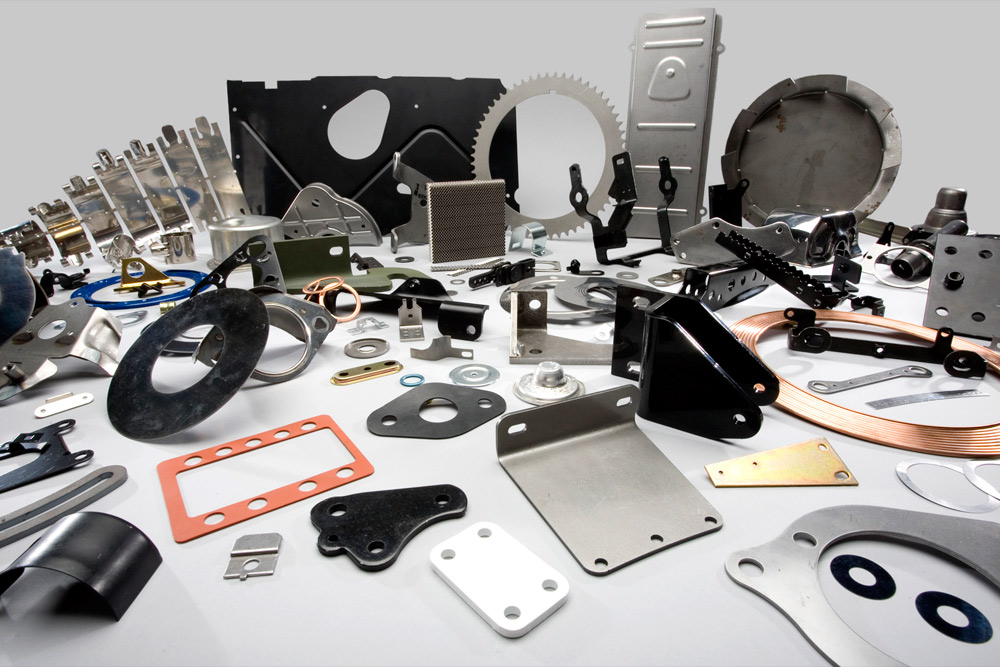Metal Stamping: Key Considerations for Quality and Efficiency
Metal Stamping: Key Considerations for Quality and Efficiency
Blog Article
Metal Stamping Technologies: Elevating Production Processes for Superior Outcomes
In the world of making processes, steel stamping has long been a cornerstone strategy for producing a variety of precision parts. With the unrelenting march of technical advancement, the landscape of steel marking is going through a considerable makeover.
Development of Steel Marking Techniques

Furthermore, developments in product scientific research have actually led to the advancement of high-strength alloys that can currently be flawlessly stamped into detailed shapes, dealing with a wider variety of industrial applications. The combination of robotics and artificial intelligence has actually even more maximized the marking process by improving speed and accuracy while minimizing the risk of human mistake.

Impact of Advanced Materials
Have advanced materials transformed steel marking procedures dramatically in the production industry? By making use of materials such as high-strength alloys, advanced compounds, and innovative layers, metal marking processes can now generate components that are lighter, more powerful, and more long lasting than ever in the past.
These sophisticated products offer remarkable mechanical homes, deterioration resistance, and thermal stability, enabling suppliers to meet the demands of contemporary markets such as aerospace, vehicle, and electronic devices. In addition, the use of advanced materials in metal marking has actually facilitated the production of complicated geometries and elaborate layouts that were formerly unattainable through conventional methods.
Additionally, the execution of innovative products has actually brought about reduced material waste, lower manufacturing prices, and much shorter preparations, making metal stamping processes a lot more economical and sustainable. As modern technology remains to breakthrough, the effect of innovative materials on steel marking processes is expected to drive more development and enhance the competition of makers in the global market.
Automation in Steel Stamping
The evolution of steel marking processes driven by the combination of innovative materials has set the stage for substantial improvements in automation within the manufacturing industry. Automation in metal stamping has revolutionized production procedures, enhancing performance, precision, and total outcome quality. Via the usage of robotics, sensing units, and computer-controlled systems, jobs that were time-consuming and as soon as manual can currently be implemented with unrivaled rate and accuracy.
Automation in steel stamping not just speeds up production rates yet also makes sure uniformity in the manufacturing procedure. By minimizing human intervention, the threat of errors is dramatically reduced, causing greater levels of product harmony and dependability. Additionally, automation allows producers to take on complex marking jobs that would be tough or unwise to accomplish by hand.
Additionally, automation in steel stamping adds to a much safer working environment by lowering the demand for employees to take part in repetitive or unsafe tasks - Metal Stamping. This change towards automation not only boosts efficiency but additionally leads the way for the future of production, where technology plays a central duty in driving functional quality
Quality Assurance and Assessment Equipments
With a focus on precision and dependability, quality assurance and evaluation systems play a vital role in making certain product excellence in steel stamping procedures. These systems are developed to keep track of every stage of production, from product evaluation to the final product, to assure that all elements meet the called for requirements. By applying advanced technologies such as optical examination systems, coordinate measuring equipments (CMM), and automated assessing tools, manufacturers can discover even the tiniest deviations in measurements, surface high quality, and overall integrity of stamped components.

Sustainability Practices in Metal Stamping
Structure upon the foundation of accuracy and reliability developed through quality assurance and assessment systems, the assimilation of lasting techniques in steel stamping processes is progressively becoming a centerpiece for makers looking for to minimize environmental impact and optimize source application. Sustainability techniques in steel marking incorporate a series read of efforts targeted at reducing waste generation, power usage, and greenhouse gas emissions throughout the production process.
One key facet of sustainability in metal stamping is the fostering of green products and innovations that promote recyclability and waste decrease. By utilizing recycled products and applying energy-efficient equipment, producers can decrease their carbon footprint and add to a much more lasting production cycle. In addition, enhancing manufacturing processes to minimize product waste and energy use not just benefits the environment yet likewise leads to set you back financial savings for services in the future.
Furthermore, the execution of sustainable practices in steel marking can improve brand reputation and appeal to environmentally conscious customers. As sustainability proceeds to acquire significance in the manufacturing industry, incorporating eco-friendly efforts into metal stamping procedures is essential for long-term success and competition out there.
Conclusion
Finally, metal marking methods have dramatically progressed over time, including advanced materials and automation to boost making processes. Quality assurance and inspection systems play a critical role in making sure superior results, while sustainability techniques are progressively being applied to minimize ecological effect. These you could try these out technologies in steel marking have reinvented the industry, resulting in much more reliable and sustainable production methods for numerous sectors.
Steel marking, when a handbook and labor-intensive process, has changed right into a very automated and innovative approach of forming steel sheets into different types and designs.Have advanced products changed steel stamping processes considerably in the manufacturing sector? By making use of products such as high-strength alloys, advanced composites, and innovative coverings, metal marking procedures can now create elements that are lighter, more powerful, and extra long lasting than ever previously.
The development of metal marking processes driven by the integration of innovative products has established the phase for considerable advancements in automation within the production market.In conclusion, steel marking techniques have actually significantly evolved over time, including sophisticated products and automation to enhance manufacturing procedures.
Report this page